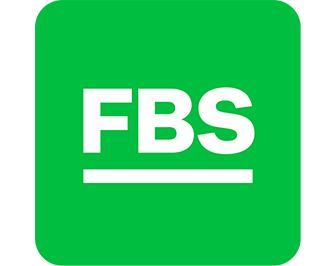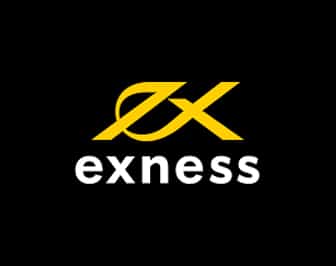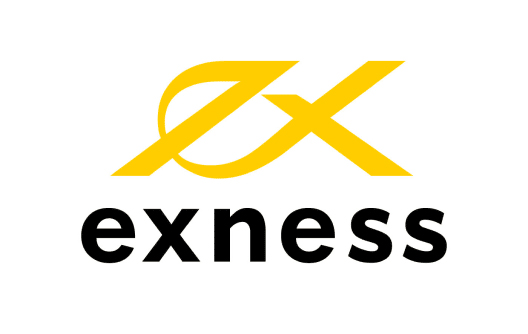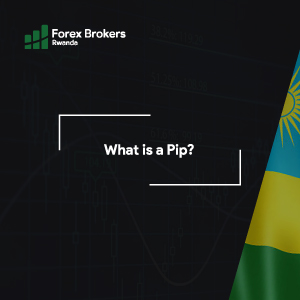
What is a Pip in Rwanda?
What is a Pip in Rwanda revealed. We tested and verified pips in forex trading for Rwandan traders.
This is a complete guide to pips in Rwanda.
In this in-depth guide you’ll learn:
- What is a pip?
- How many dollars is 1 pip equal to?
- Our recommended forex brokers with the best pips?
- How to compare forex trading brokers against each other?
- How to calculate pips as a Rwandan trader?
- How much are 100 pips worth?
- What is the difference between pips and pipettes (BPS)?
- How to calculate pips with lot sizes?
- Which forex brokers offer a low minimum deposit of $5 (5135 RWF)?
- Which brokers offer a signup bonus for first-time traders?
And lots more…
So if you’re ready to go “all in” with pips for Rwandans…
Let’s dive right in…
10 Best Forex Brokers in Rwanda for 2024
Rank
Broker
Review
Regulators
Min Deposit
Official Site
- Louis Schoeman
What is a Pip in Rwand? (Updated 2024)
How do Pips work in Forex Trading?
How Leverage Can Affect the Pip Value in Forex Trading
Fixed Spreads vs Variable/Floating Spreads
How can you determine the Pip Pricing if you do not have a trading calculator?
What Pips can I expect when I trade Forex in Rwanda?
Low Spread Strategies and Tips for Rwandans
What to consider when practicing Low Spread Trading in Rwanda
How to Choose the Right Low Spread Forex Broker in Rwanda
What is a Pip?
Currency prices typically undergo such small fluctuations that they are measured in units known as “pips” or “percentage in point,” rather than the conventional “points.” A pip commonly denotes the fourth decimal place of a price and is equivalent to one-hundredth of a percent.
What is a Spread?

The term “spread” can have different meanings, but it typically refers to the difference between two prices, rates, or yields. It is a measure of the disparity or gap between two related financial instruments or indicators. The spread is commonly used in various financial contexts to analyze and compare the relative value or performance of assets or investments.
In forex trading, the spread represents the variance between the bid (sell) and ask (buy) prices of a currency pair.
Rwandan traders, when entering the world of forex, quickly become familiar with the concept of spread. The bid and ask prices are always specified for a currency pair.
For instance, if you intend to sell the base currency, the bid price would be lower than the ask price, giving rise to a “bid-ask spread.”
A currency pair consists of two currencies: a “base currency” and a “quote” or “counter” currency. Through the currency pairing, you can determine the equivalent amount of the quote currency in relation to one unit of the base currency.
Buying will always incur a higher cost than selling, with the underlying market price typically falling in the middle.
Notably, the price of a security reflects the market’s assessment of its value at any given moment. Understanding the existence of both “bid” and “ask” requires considering two key market participants: the price taker or retail trader and the market maker, broker, or overall counterparty.
Market makers, often employed by brokerages, offer securities for sale at a specified price (ask price) and bid to acquire securities at a designated price (bid price).
When initiating a forex transaction, an investor chooses one of these two prices based on whether they wish to buy (ask price) or sell (bid price) the investment.
The spread, the difference between the bid and ask prices, represents the primary transaction cost of trading (excluding fees), collected by the market maker through the standard order processing at bid and ask rates.
This is why financial brokerages mention “crossing the spread” when referring to their revenue generation. The bid-ask spread can be seen as an indication of an asset’s supply and demand.
The bid reflects the demand for a security, while the ask represents the supply. Thus, when the bid and ask prices diverge, the price movement signifies a shift in supply and demand.
The bid-ask spread can be significantly influenced by the depth of the bid and ask. If fewer market participants place limit orders to buy an asset (leading to fewer ask prices) or if fewer sellers submit limit orders to sell, the spread may widen considerably.
Therefore, it is crucial to consider the bid-ask spread when placing a purchase limit order to ensure its execution.
Market makers and experienced traders, recognizing potential market risks, may also widen the spread between the best bid and best ask price they are willing to offer at a given time.
If multiple market makers follow this practice for a specific asset, the stated bid-ask spread will be higher than usual. Certain high-frequency traders and market makers seek to profit from bid-ask spread fluctuations.
How do Pips work in Forex Trading?

Pips, which stands for “percentage in point,” serve as a unit of measurement within forex trading, indicating the smallest price movement in a currency pair. Here’s a breakdown of how pips function in the forex market:
Definition:
A pip denotes the fourth decimal place in most currency pairs. For instance, if the EUR/USD currency pair shifts from 1.2500 to 1.2501, it has moved by one pip. However, in certain currency pairs where the Japanese yen (JPY) is the quote currency, the pip represents the second decimal place. For example, if the USD/JPY pair moves from 110.00 to 110.01, it has moved by one pip.
Pip value:
The monetary value of a pip relies on the position size, also known as lot size, and the specific currency pair being traded. Calculating the pip value involves multiplying the position size (in lots) by the pip increment. For instance, if you are trading one standard lot (100,000 units) of EUR/USD, and the pip increment is $0.0001, the pip value would amount to $10 ($0.0001 x 100,000).
Profit and loss calculation:
In forex trading, profits and losses are often measured in pips. When the price moves in a favorable direction, you accumulate pips, while in an unfavorable movement, you incur a loss of pips. To determine the monetary profit or loss of a trade, you can multiply the number of pips gained or lost by the pip value.
Pipettes:
Some brokers provide fractional pip values, referred to as “pipettes” or “fractional pips.” These represent an additional decimal place beyond the standard pip. For instance, if the EUR/USD pair shifts from 1.25000 to 1.25001, it has moved by one pipette.
Pip spread:
The spread denotes the difference between the bid and ask prices of a currency pair and is typically measured in pips. For instance, if the EUR/USD has a bid price of 1.2500 and an ask price of 1.2502, the spread amounts to 2 pips.
How Leverage Can Affect the Pip Value in Forex Trading

Leverage has a significant impact on the pip value in forex trading as it can amplify both potential gains and losses. Here’s how leverage influences the pip value:
Increased position size:
Leverage enables traders to control larger positions with a smaller amount of their own capital. For instance, with a leverage ratio of 1:100, a trader can control a position worth $100,000 by only investing $1,000 as margin. This larger position size directly affects the pip value.
Amplified profits and losses:
When leverage is applied, the pip value is multiplied by the leverage ratio. If the pip value without leverage is, for example, $10 per pip, a leverage ratio of 1:100 would magnify the pip value to $1,000 ($10 x 100). Consequently, each pip movement in your favor or against you will result in a profit or loss multiplied by the leverage ratio.
Increased potential gains:
Leverage allows traders to potentially generate higher profits from smaller price movements. For instance, if the price moves 100 pips in your favor and the pip value is $1,000, your profit would amount to $100,000 ($1,000 x 100) with a leverage ratio of 1:100. Leverage provides the opportunity to achieve substantial gains even with relatively modest price fluctuations.
Elevated risk:
While leverage can enhance profits, it also escalates the risk of losses. If the price moves contrary to your position, the potential losses will be amplified. It is crucial to bear in mind that higher leverage increases the risk of significant losses, as even a slight adverse price movement can deplete your trading account rapidly.
Margin requirements and risk management:
Leverage influences the margin requirements set by your broker. Higher leverage ratios necessitate smaller margin amounts to maintain a position. However, it is imperative to practice responsible risk management and avoid excessive leverage that could jeopardize your trading capital. Establishing appropriate stop-loss orders and position sizes based on your risk tolerance is vital to effectively manage potential losses.
Margin calls and account liquidation:
If the losses on a leveraged trade exceed the available margin in your trading account, a margin call may be triggered by your broker. This requires you to deposit additional funds to meet the margin requirements or face the automatic liquidation of your positions. It is important to monitor your account diligently and ensure you have sufficient funds to cover potential losses.
Fixed Spreads vs Variable/Floating Spreads

Fixed spreads and variable (or floating) spreads are two types of pricing models used by forex brokers to determine the cost of trading. Here’s a comparison between fixed spreads and variable spreads:
Fixed Spreads:
- In a fixed spread model, the spread remains constant regardless of market conditions or volatility. The broker quotes a specific spread for each currency pair, and that spread remains consistent regardless of changes in market liquidity or economic events.
- Fixed spreads are typically wider than variable spreads since they provide a level of certainty for traders, even during times of high market volatility.
- Traders know the exact cost of executing a trade in terms of the spread, which can be beneficial for those who prefer predictable transaction costs.
- Fixed spreads can be especially useful for traders who engage in strategies that require stable and consistent pricing, such as scalping or news trading.
- However, during periods of low market volatility, fixed spreads may be higher than variable spreads, potentially resulting in higher trading costs.
Variable/Floating Spreads:
- In a variable spread model, the spread fluctuates in response to market conditions. It reflects the supply and demand dynamics of the currency pair and can be influenced by factors such as market liquidity, news events, and trading activity.
- Variable spreads tend to be tighter during normal market conditions when liquidity is high, offering traders the potential for lower trading costs.
- During periods of high market volatility or low liquidity, variable spreads can widen significantly, making trading more expensive.
- Traders who prefer tighter spreads and are comfortable with the potential for fluctuations may find variable spreads more suitable for their trading strategies.
- Variable spreads can be beneficial for traders who aim to capture small price movements or employ scalping strategies, as lower spreads can enhance their profit potential.
How to read Pips

To understand pips in forex trading, follow these steps:
Familiarize yourself with the pip definition: A pip, short for “percentage in point,” represents the smallest price movement in a currency pair. In the majority of currency pairs, a pip is represented by the fourth decimal place, except for pairs involving the Japanese yen. In yen-based pairs, such as USD/JPY, a pip is measured by the second decimal place. To illustrate, if the EUR/USD currency pair moves from 1.2500 to 1.2501, it has experienced a one-pip movement.
Calculate the pip value:
The monetary value of a pip depends on the position size (lot size) and the currency pair being traded. You can calculate the pip value by multiplying the position size (in lots) by the pip increment. For example, if you are trading one standard lot (100,000 units) of EUR/USD and the pip increment is $0.0001, the pip value would be $10 ($0.0001 x 100,000).
Understand price quotes:
Forex trading, a dynamic and fast-paced financial market, revolves around the concept of currency pairs. These pairs are quoted using two essential prices: the bid price and the ask price. Understanding the significance of these prices is fundamental for any aspiring trader.
Track price movements:
As currency pairs fluctuate, you can track the pip movements to assess your profit or loss. For example, if the EUR/USD moves from 1.2500 to 1.2505, it has moved by 5 pips. You can calculate the monetary gain or loss by multiplying the pip value by the number of pips gained or lost.
Consider fractional pips:
Some brokers offer fractional pip values, often called “pipettes” or “fractional pips.” These represent an additional decimal place beyond the standard pip. For instance, if the EUR/USD moves from 1.25000 to 1.25001, it has moved by one pipette.
How can you determine the Pip Pricing if you do not have a trading calculator?

To convert the pip value to your account currency, if your trading account is denominated in a different currency than the quote currency, you can follow these steps:
Determine the prevailing exchange rate between the quote currency and your account currency. This exchange rate represents how much of your account currency is needed to buy one unit of the quote currency.
Multiply the pip value by the exchange rate. Take the pip value you calculated in the quote currency and multiply it by the exchange rate. This will give you the pip value in your account currency.
For example, let’s say your trading account is denominated in USD, and you are trading EUR/USD. The pip value you calculated in EUR is 5 units of the quote currency. If the exchange rate between EUR/USD is 1.2, you would multiply 5 by 1.2, resulting in a pip value of 6 units of USD.
By multiplying the pip value by the exchange rate, you can convert it to your account currency and determine its impact on your trading account.
What Pips can I expect when I trade Forex in Rwanda?
There are specific pip values for each currency due to the nature of currency exchange. While some trading systems allow for price fluctuations to be recorded in half-pip increments, most platforms use one pip as a standard. It is important to note that different platforms and price feeds may display either four or five decimal places, which determines the precision of the pip measurement.
The most commonly traded currencies include the Japanese yen (JPY), British pound (GBP), US dollar (USD), Euro (EUR), and Canadian dollar (CAD). These major currencies are often paired with less well-known currencies for trading purposes.
When trading forex, it is advisable for Rwandan traders to monitor the daily average ranges of currency pairs to assess market movement. If the actual pairings deviate significantly from the predicted ranges, it may be necessary to adjust profit targets accordingly.
Low Spread Strategies and Tips for Rwandans

Here are strategies and tips for Rwandan traders looking to optimize their forex trading experience with low spread:
Choose brokers with competitive spreads:
Opt for forex brokers that offer low spreads, comparing them based on reliability, regulation, and overall trading conditions. Narrower spreads can help reduce trading costs.
Focus on major currency pairs:
Major pairs like EUR/USD, GBP/USD, or USD/JPY often have tighter spreads compared to exotic or less frequently traded pairs. Trading major pairs can help access lower spreads and potentially reduce costs.
Trade during optimal market hours:
Spreads tend to be narrower during high liquidity and active trading sessions. The London and New York overlapping sessions (1:00 PM to 6:00 PM Rwandan time) offer higher liquidity and tighter spreads. Take advantage of these peak hours.
Utilize limit orders:
Set limit orders to buy below the current market price or sell above it. This allows you to potentially enter trades when the spread is favorable. During volatile conditions, limit orders can be useful when spreads may temporarily widen.
Monitor economic news and events:
Major economic releases and events can impact market volatility and spreads. Stay informed about economic calendars and important announcements to anticipate spread widening. Adjust your strategy or avoid trading during high-impact news events.
Implement risk management techniques:
Prioritize risk management alongside low spreads. Set appropriate stop-loss orders to limit losses, and determine position sizes based on risk tolerance and account balance. Avoid excessive risks solely based on low spreads.
Continuously educate yourself:
Forex trading is dynamic, so staying updated on market trends, strategies, and techniques is vital. Engage in continuous learning through books, online resources, webinars, or courses to enhance trading skills and adapt to changing market conditions.
What to consider when practicing Low Spread Trading in Rwanda

Here are some important points to keep in mind when practicing low spread trading in Rwanda:
Reliable and Regulated Brokers:
Choose a reputable forex broker that is regulated by a recognized authority. Ensure the broker has a history of providing competitive spreads, reliable trade execution, and quality customer support. Regulatory oversight helps protect your funds and ensures fair trading conditions.
Spread Comparison:
Compare the spreads offered by different brokers and select the one with consistently low spreads. Look for brokers that provide transparent and competitive pricing without hidden fees or commissions. Consider both fixed and variable spread models and choose the one that suits your trading strategy and preferences.
Trading Platform:
Evaluate the trading platforms offered by brokers. Ensure the platform is user-friendly, stable, and provides access to real-time market data. Look for platforms that offer features like customizable charts, technical indicators, and one-click trading to facilitate low spread trading.
Market Hours:
Be aware of the optimal trading hours for low spread trading. Liquidity and trading volume are usually higher during certain sessions, such as the London and New York sessions, which can result in tighter spreads. Plan your trading activities around these high-liquidity periods to take advantage of favorable spread conditions.
Currency Pairs:
Focus on major currency pairs, such as EUR/USD, GBP/USD, or USD/JPY, as they typically offer lower spreads due to their high liquidity. Avoid exotic or less frequently traded currency pairs, as they tend to have wider spreads. Analyze the spreads offered for different currency pairs by your broker and choose accordingly.
Economic News and Events:
Stay updated on economic news and events that can impact market volatility and spreads. High-impact news releases, such as central bank announcements or economic data releases, can cause spreads to widen temporarily. Adjust your trading strategy accordingly or consider avoiding trading during these volatile periods.
Risk Management:
Implement effective risk management practices to protect your trading capital. Determine your position sizes based on your risk tolerance and set appropriate stop-loss orders. Low spreads are beneficial, but it’s crucial to maintain a disciplined approach to manage risks effectively.
Continuous Learning:
Enhance your trading knowledge and skills through continuous learning. Stay informed about market trends, technical analysis, and trading strategies. Engage in educational resources, attend webinars or seminars, and learn from experienced traders to improve your low spread trading techniques.
How to Choose the Right Low Spread Forex Broker in Rwanda

When choosing the right low spread forex broker in Rwanda, consider the following factors:
Regulatory Compliance:
Ensure the broker is regulated by a reputable financial authority. Regulation helps protect your funds and ensures the broker operates in a fair and transparent manner. Look for brokers licensed by well-known regulatory bodies, such as the Rwanda Capital Market Authority (CMA) or other internationally recognized regulators.
Competitive Spreads:
Compare the spreads offered by different brokers. Look for brokers that consistently provide low spreads on the currency pairs you intend to trade. Narrow spreads reduce your trading costs and can potentially increase your profitability. Consider both fixed and variable spread models and choose the one that aligns with your trading strategy.
Trading Platform:
Evaluate the trading platforms offered by brokers. A reliable and user-friendly platform is crucial for executing trades with low spreads. Ensure the platform has advanced charting tools, order types, and real-time market data. Test the platform’s stability and speed to ensure efficient trade execution.
Liquidity Providers:
Inquire about the liquidity providers the broker utilizes. Brokers with strong relationships with reputable liquidity providers can offer competitive spreads. Established liquidity providers enhance the broker’s ability to provide low spreads consistently, even during periods of high market volatility.
Execution Quality:
Consider the broker’s execution quality. Look for brokers that provide fast and reliable trade execution without significant slippage. Efficient order processing can help you secure low spreads and improve your overall trading experience.
Account Types:
Evaluate the available account types offered by brokers. Some brokers offer specific account types tailored for low spread trading. These accounts may have lower commissions or reduced spreads, providing cost advantages for traders focused on low spread strategies.
Customer Support:
Assess the quality of customer support provided by the broker. Prompt and responsive customer support can be crucial, especially during times of technical difficulties or account-related queries. Look for brokers that offer multiple channels of support, such as phone, email, or live chat.
Reputation and Reviews:
Research the broker’s reputation and read reviews from other traders. Check online forums or review websites to gather feedback on their services, spreads, and overall trading conditions. A broker with positive reviews and a good reputation is more likely to deliver a satisfactory low spread trading experience.
Educational Resources:
Consider the availability of educational resources and trading tools provided by the broker. Brokers that offer educational materials, webinars, or market analysis can be valuable for enhancing your trading skills and staying updated on market trends.
The Best Low Spread Forex Brokers in Rwanda
In this article, we have listed the best Forex brokers which charge the lowest spreads in Rwanda. We have further identified the forex brokers that offer additional services and solutions to Rwandan traders.
Best Low Spread MetaTrader 4 / MT4 Forex Broker in Rwanda
Min Deposit
USD 5
Regulators
CySEC, FSC, CFTC
Trading Desk
MetaTrader 4 and MetaTrader 5
Crypto
No
Total Pairs
47
Islamic Account
Yes
Trading Fees
Low
Account Activation Time
24 Hours
Overall, HF Markets is the best Low Spread MT4 forex broker in Rwanda. HF Markets provides Rwandans access to MetaTrader 4 across devices. The spreads that Rwandans can expect on major forex pairs start from 0.0 pips with a small commission charged.
Best Low Spread MetaTrader 5 / MT5 Forex Broker in Rwanda
Min Deposit
USD 300
Regulators
FSCA
Trading Desk
MetaTrader 5
Crypto
Yes
Total Pairs
60
Islamic Account
No
Trading Fees
Low
Account Activation Time
24 Hours
Overall, Global GT is the best Low Spread MetaTrader 5 forex broker in Rwanda. Global GT only offers MetaTrader 5 and provides high leverage ratios to Rwandan traders. Global GT charges zero-pip spreads on major currency pairs such as EUR/USD which can be traded with 1:1000 leverage.
Best Low Spread Forex Broker for beginners in Rwanda
Min Deposit
$1 / 1119 RWF
Regulators
FCA, ASIC, CySEC, EFSA, JSC
Trading Desk
• MetaTrader 4
• MetaTrader 5
• Admirals Mobile App
Crypto
Yes
Total Pairs
35 Forex Currency Pairs
Islamic Account
Yes
Trading Fees
Low
Account Activation Time
24 Hours
Overall, Admirals is the best Low Spread forex broker for beginners in Rwanda. Admirals is a multi-regulated forex and CFD broker. With a deposit of 982 Franc, Rwandan traders can trade an enormous range of financial instruments that feature zero-pip spreads.
Best Low Spread Islamic / Swap-Free Forex Broker in Rwanda
Min Deposit
USD 10
Regulators
CBCS, CySEC, FCA, FSA, FSC, FSCA, CMA
Trading Desk
MetaTrader 4 and MetaTrader 5
Crypto
Yes
Total Pairs
107
Islamic Account
Yes
Trading Fees
Low
Account Activation Time
24 Hours
Overall, Exness is the best Low Spread Islamic / Swap-Free forex broker in Rwanda. Exness records more than 15,000 accounts which are registered monthly. Rwandans can participate in trading over 200 financial instruments that feature low spreads from 0.0 pips.
Best Franc Trading Account Forex Broker in Rwanda
Min Deposit
USD 10 / 10 670 RWF
Regulators
FSC
Trading Desk
MetaTrader4
Crypto
Yes
Total Pairs
60+
Islamic Account
Yes
Trading Fees
Low
Account Activation Time
24 Hours
Overall, Tifia is the best Franc trading account forex broker in Rwanda. Tifia is locally based in Rwandaand offers commission-free trading and zero-pip spreads. Tifia does not charge any deposit fees and there is a low minimum deposit required when Rwandans register a trading account.
Best Low Spread Volatility 75 / VIX 75 Forex Broker in Rwanda
Min Deposit
200 USD / 21 7071 RWF
Regulators
ASIC, BaFin, CMA, CySEC, DFSA, FCA, SCB
Trading Desk
MetaTrader 4, MetaTrader 5, cTrader and TradeView
Crypto
Yes (Not available in Africa)
Total Pairs
60+
Islamic Account
No
Trading Fees
Low
Account Activation Time
24 Hours
Overall, Pepperstone is the best Low Spread Volatility 75 / VIX 75 forex broker in Rwanda. Pepperstone is ideal for both beginner and institutional Rwandan traders. Pepperstone offers VIX as a tradable financial instrument under its list of indices. Rwandan traders can expect low and competitive spreads with Pepperstone.
Best Low Spread Sign-up Bonus Broker in Rwanda
Min Deposit
USD 1
Regulators
IFSC
Trading Desk
Metatrader 4
Crypto
Yes
Total Pairs
300
Islamic Account
No
Trading Fees
Low
Account Activation Time
24 Hours
Overall, SuperForex is the best Low Spread sign-up bonus broker in Rwanda. SuperForex offers more than 400 tradable products to Rwandans. Of the 11 trading accounts that SuperForex offers, several feature zero-pip spreads.
you might also like: What is Scalping?
you might also like: What is Swing Trading?
you might also like: What is Forex Trading?
FAQ
How is a pip calculated in forex?
To determine the value of a pip, divide the standard value of one pip, which is 0.0001 of the currency pair’s current market value. After that, multiply that amount by your position size (in lots), which is the number of base units that you are exchanging. This will give you the total value of the trade.
At how many pips should I take profit when trading forex in Rwanda?
In general, it is considered ideal to have a risk-reward ratio of 1:3 in trading. This means that the potential profit should be three times greater than the potential loss. For example, if you set your Stop Loss at 50 pips, the corresponding Take Profit level would be 150 pips.
How many pips should I aim for per day when I trade forex in Rwanda?
The number of pips you aim for in a day depends on your trading experience, knowledge, and risk appetite. For beginner traders, it is often recommended to set a modest target, such as 10 pips a day.
How can you win consistently in forex?
There is no guarantee that traders will make consistent profits every time that they trade. However, to profit consistently you must pay attention to pivot levels, preserve, and protect your capital, use simplified market analysis, and use stop-loss and take profit orders at reasonable levels.
How long will it take to learn forex?
To learn how to trade Forex or other markets, it can take up to a year for traders to start understanding the forex markets. Traders never stop learning and therefore there is no maximum time that can be tied to learning forex and mastering it fully as the markets constantly change, forcing traders to adapt and learn new skills and strategies.
Table of Contents





























